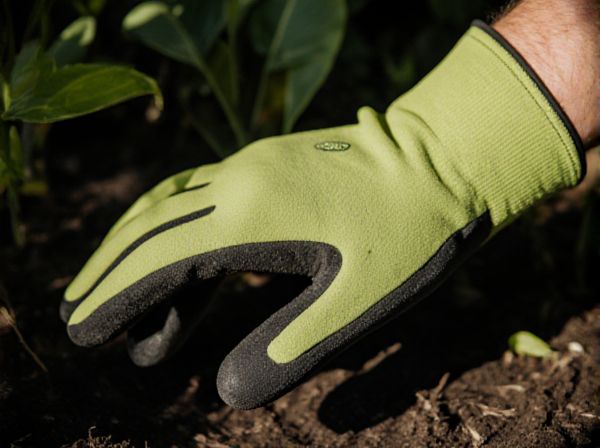
partial shade vs light shade Illustration
Partial shade provides filtered sunlight for several hours a day, ideal for plants that require moderate light without direct exposure to intense midday sun. Light shade offers more consistent, gentle illumination, protecting plants from harsh sunlight while still supporting photosynthesis effectively. Choosing between partial shade and light shade depends on the specific light requirements and tolerance of the plants being cultivated.
Table of Comparison
| Feature | Partial Shade | Light Shade |
|---|---|---|
| Sun Exposure | 3-6 hours of direct sunlight daily | Less than 3 hours of direct sunlight, dappled or filtered light |
| Plant Types | Vegetables, flowering plants needing moderate light | Ferns, hostas, shade-loving perennials |
| Temperature | Moderate warmth with some sun heat | Cooler, protected from intense sunlight |
| Growth Rate | Faster growth due to more sunlight | Slower growth, adapted to lower light levels |
| Common Uses | Gardens needing balanced sun and shade | Under trees, shaded patios |
Understanding Shade Levels in Gardening
Partial shade refers to areas receiving three to six hours of direct sunlight daily, offering balanced light suitable for many plants, while light shade receives less than three hours of direct sun but abundant indirect light. Understanding these shade levels is crucial for selecting appropriate plants, such as hostas and ferns for partial shade or impatiens and begonias thriving in light shade. Properly matching plant species with the shade intensity ensures optimal growth, health, and flowering in garden design.
Defining Partial Shade and Light Shade
Partial shade refers to areas that receive three to six hours of direct sunlight daily, often accompanied by filtered or dappled light during the remaining hours. Light shade, on the other hand, typically means less than three hours of direct sunlight, with predominantly indirect or diffused light throughout the day. Understanding these distinctions is crucial for gardeners selecting plants suited to varying sunlight exposures, ensuring optimal growth and health.
Key Differences Between Partial Shade and Light Shade
Partial shade refers to areas receiving 3 to 6 hours of direct sunlight daily, while light shade receives filtered or dappled sunlight with less than 3 hours of direct sun. Plants in partial shade typically tolerate more sunlight and exhibit robust growth compared to light shade plants, which thrive in softer, indirect light conditions. Understanding these distinctions guides optimal garden placement and plant selection for healthy development.
Factors Influencing Shade in Your Garden
Partial shade occurs when areas of the garden receive direct sunlight for 3 to 6 hours daily, while light shade refers to filtered light or less than 3 hours of direct sun. Factors influencing shade in your garden include the position of buildings and trees, the time of day, and seasonal changes that affect sunlight angle and duration. Soil moisture and temperature also vary under different shade conditions, impacting plant growth and species selection.
Best Plants for Partial Shade Conditions
Best plants for partial shade conditions include hostas, ferns, and astilbes, which thrive with 3 to 6 hours of filtered sunlight. Unlike light shade plants that tolerate bright, dappled light, partial shade plants require less intense sunlight and perform well in rooms or garden sections with a balance of shade and sun. Incorporating these shade-tolerant species enhances garden diversity and ensures lush growth in areas receiving moderate light.
Top Choices for Light Shade Gardens
Top choices for light shade gardens include hostas, astilbes, and ferns, which thrive in dappled sunlight and partial sun environments. These plants offer vibrant foliage and delicate blooms, enhancing garden aesthetics while requiring moderate sunlight exposure. Selecting shade-tolerant perennials ensures healthy growth and year-round visual interest in areas receiving filtered light.
Soil and Watering Needs in Shade Areas
In partial shade areas, soil tends to retain moderate moisture, requiring well-draining soil rich in organic matter to support plant health. Light shade zones often experience drier conditions, necessitating soil with higher water retention capacity and more frequent watering to prevent stress. Proper soil composition and watering schedules optimized for shade intensity ensure optimal plant growth and resilience.
Tips for Designing with Shade Variations
Designing with partial shade requires selecting plants that thrive in filtered sunlight, such as hostas and ferns, to ensure healthy growth and vibrant foliage. Light shade, offering more indirect sunlight, supports a broader variety of shade-tolerant flowers like impatiens and begonias, enhancing aesthetic appeal with color diversity. Adjusting plant placement according to specific shade intensity optimizes garden microclimates and promotes sustainable landscaping practices.
Common Challenges in Shade Gardening
Partial shade often presents challenges such as inconsistent light exposure causing uneven plant growth and difficulty in selecting species that thrive in fluctuating sunlight. Light shade, characterized by filtered or dappled sunlight, can lead to issues like increased competition among shade-tolerant plants and higher susceptibility to fungal diseases due to retained moisture. Mastering the balance between light availability and plant requirements is essential for successful shade gardening in both partial and light shade environments.
Maximizing Plant Health in Partial and Light Shade
Maximizing plant health in partial and light shade requires understanding the specific light intensity and duration each plant species needs for optimal growth. Partial shade typically provides 3-6 hours of direct sunlight per day, ideal for plants like hostas and ferns that balance photosynthesis with protection from harsh sun. Light shade offers filtered or dappled sunlight, supporting shade-tolerant plants by reducing heat stress and preserving soil moisture essential for nutrient uptake.
partial shade vs light shade Infographic

 gardendif.com
gardendif.com